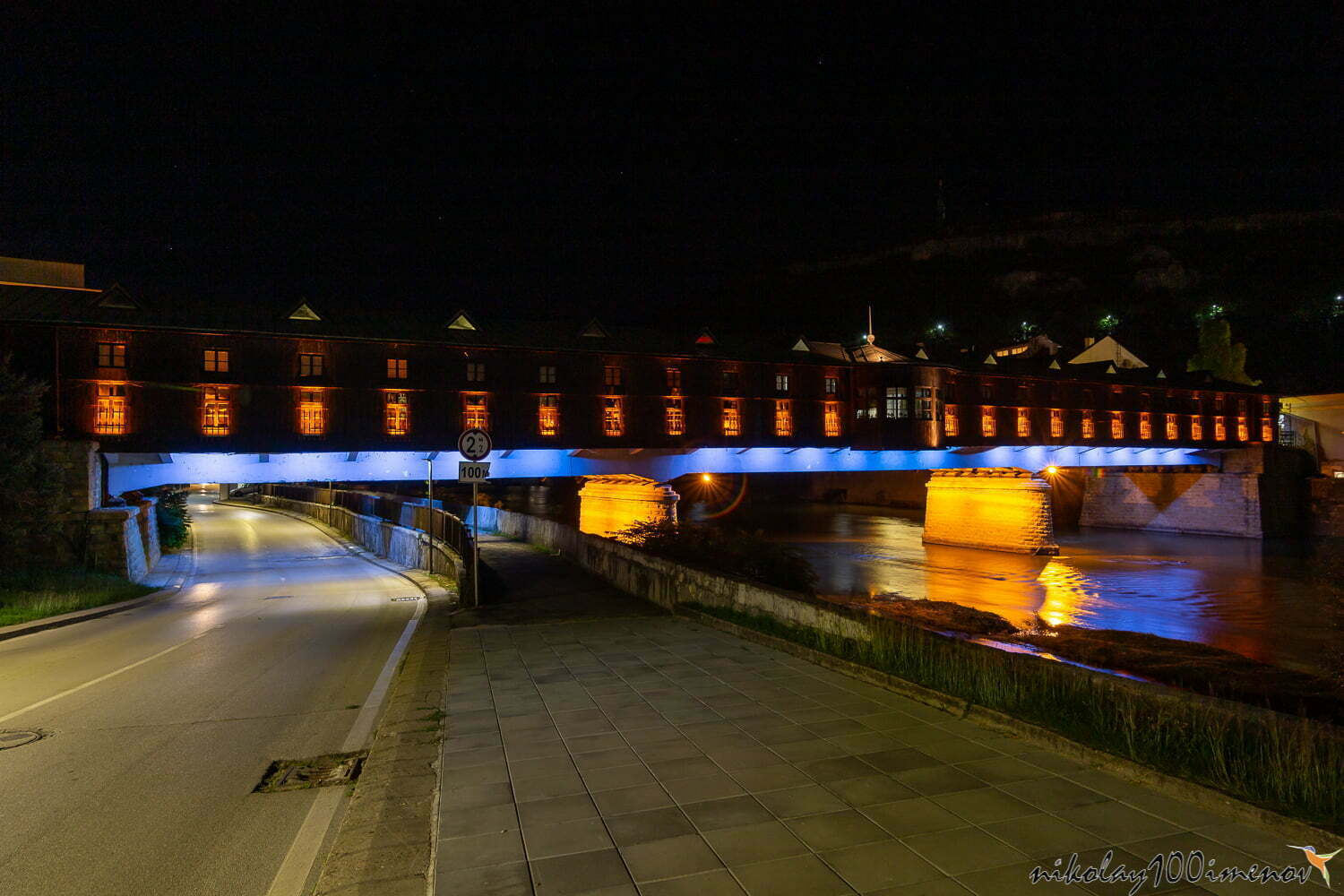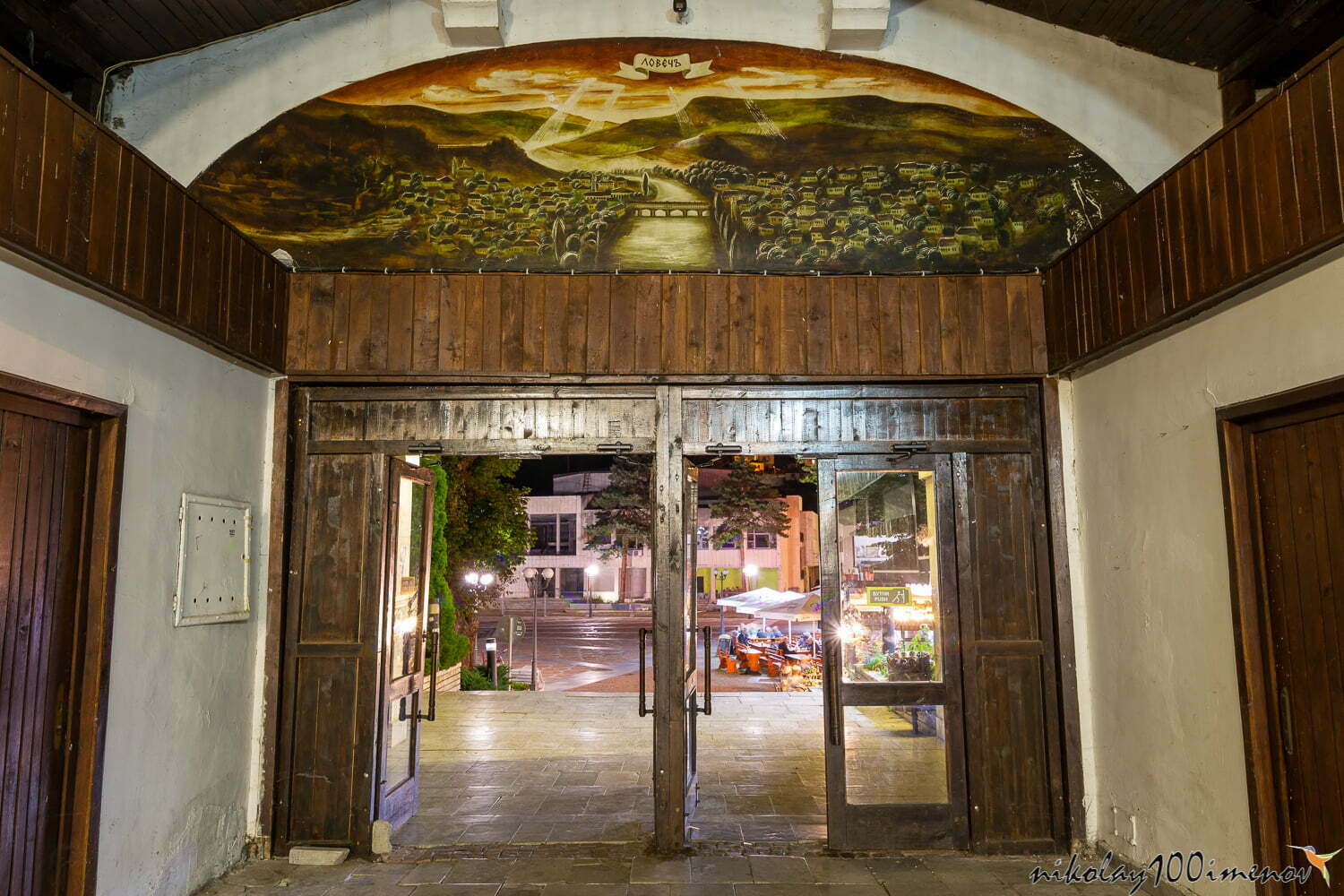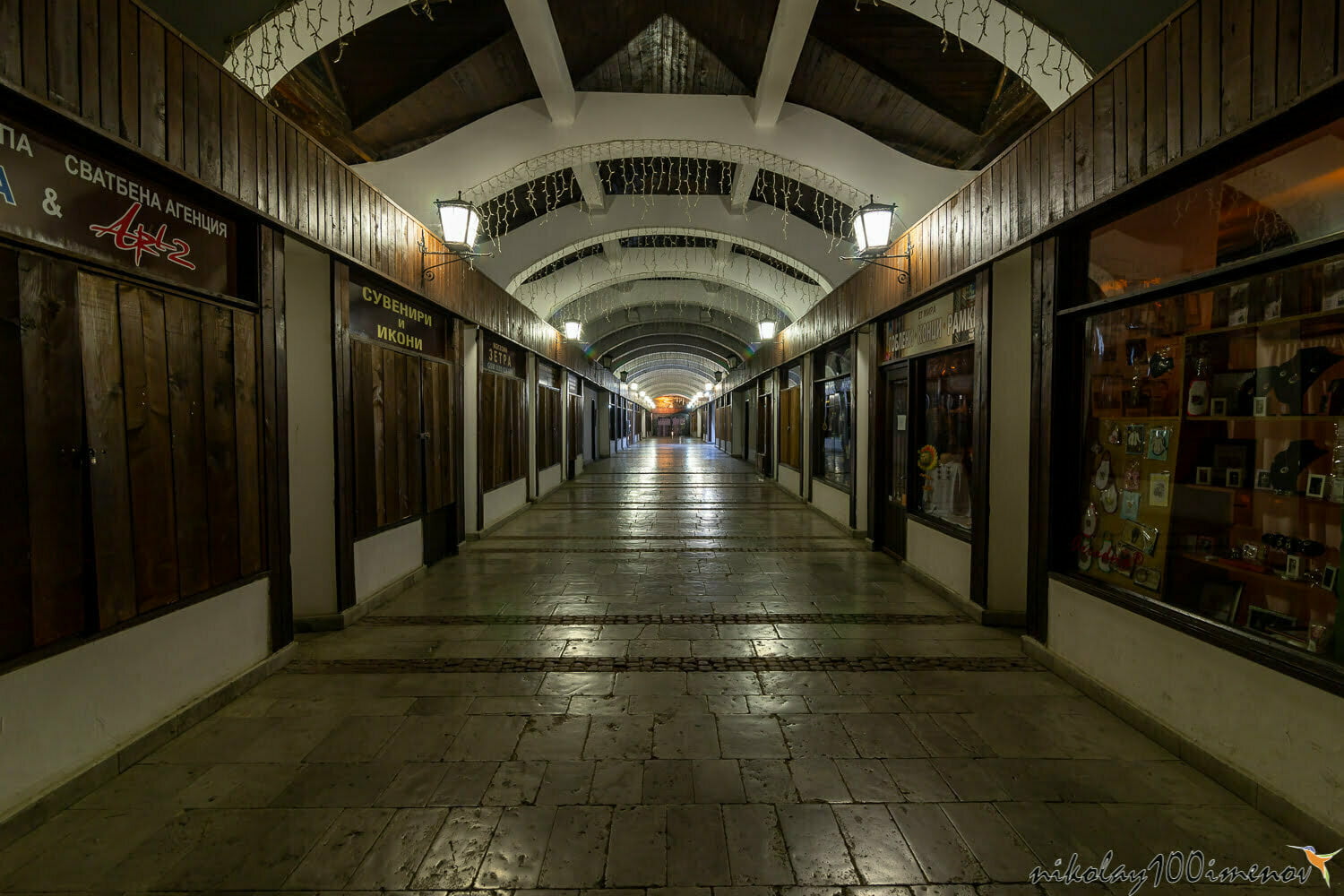Home » Top 3 Sights to visit in Lovech, Bulgaria – The Covered Bridge and more
Lovech, the seventh largest city in Bulgaria, lies at the center of the Danubian Plain, approximately 150 kilometers east of Sofia. It is a wonderful city filled with historical sights and plenty of culture to explore. One of the most iconic attractions in Lovech is the Covered Bridge, which has been standing since 1877. If you are looking for a place to explore the history and culture of Bulgaria, Lovech is definitely worth visiting. In this blog post, we will discuss three reasons why Lovech should be at the top of your list when it comes to planning your vacation. From the Covered Bridge to Deli Hamam and Hisarya Fortress, Lovech has something for everyone.
About Lovech
Lovech is a small city located in Bulgaria, located in the foothills of the Balkan Mountains. It is home to some beautiful landmarks, things to see and do. One of the most famous attractions in Lovech is the Covered Bridge, or “Покритият мост”, which has spanned the Osam River since the 16th century. The bridge is a great place to view the river and surrounding countryside. Another popular sight is Deli Hamam, an old Ottoman bath house that was constructed in 1581. Hisarya Fortress is another key landmark, as it has stood since the 6th century and provides stunning views of the town and surrounding countryside. Lovech is also home to plenty of other things to see and do including historical churches, museums, and parks. There is something for everyone in this charming city, from culture to relaxation. Lovech has a long history, beginning as an ancient Thracian settlement in the 7th century BC. It was eventually conquered by the Romans in the 1st century BC, who gave the city its current name. In the Middle Ages, Lovech became an important trade hub on the road from Constantinople. During the Ottoman period, Lovech became one of the most powerful cities in Bulgaria and was the site of several battles between the Bulgarian rebels and Ottoman forces. Today, Lovech is still known for its history, but it is also a modern city with plenty of things to see and do.
Where is the Covered bridge?
At the center of Lovech’s town square is one of the most beautiful architectural landmarks in Bulgaria – the Covered Bridge. This remarkable bridge was designed and constructed by Kolyu Ficheto, who also built an identical bridge in nearby Kalofer. Completed in 1877, this historic bridge has served as an important transport corridor since its conception.
The bridge is located in Lovech next to Todor Kirkov square. It is a masterpiece of the famous Bulgarian artist Nikola Fichev, also known as Kolyu Ficheto. This covered bridge is one of the most famous in Bulgaria and a true gem of Lovech. The bridge has been repaired and renovated many times, but it still retains its original beauty and charm.
What is so special about the Covered bridge?
The bridge is one of the few remaining in Europe that have shops on them. It is fully covered by a wooden construction protecting the pedestrians and the shops inside from the weather. It has unique features and design for the era it was built in.
Places to stay in Lovech
How was it built?
After a flood in 1872 almost completely destroyed the bridge providing access to the town, the local police chief commissioned Kolyu Ficheto, a famous Bulgarian master builder, to construct a new one. During the building process, each Lovech citizen contributed, whether by working themselves or donating money to pay other workers. The covered bridge is built on wooden pillars and and initially had six arches with a total length of 84 meters. The construction finished in 1874. Unfortunatelly it was destroyed by fire on the night of 2 to 3 August 1925. A modern bridge was built in its place in 1931, but was eventually replaced by an artistic reconstruction of Ficheto’s original design in 1981-82. A 106-meter-long bridge with 14 shops is currently in use.
What you can find inside the Covered bridge?
The shops inside the bridge sell souvenirs for art lovers, including paintings, books on art, ceramics and more. The bakery near the bridge sells traditional Bulgarian pastries like banitsa (cheese pie) and baklava (flaky pastry with syrup).
Places to stay in Pleven
What else is nearby?
The Covered bridge in Lovech connects Todor Kirkov square with the main street of the city. After visiting the Todor Kirkov square you can cross the bridge and walk around the city centre of Lovech by going right. There you can see the monument of Exarch Joseph and the curch st. Cyril and Metodii. If you take the left, there you will find the old town of Lovech called Varosha and the medieval fortress Hisarya. The old town bath Deli Hamam and the city fortress Hisarya are also in the same direction.
Deli Hamam - the old town bath in Lovech
Deli Hamam is one of the most popular attractions in Lovech. It is a Turkish bath located near the Covered Bridge and Hisarya Fortress in the city center. Constructed in the 16th century, Deli Hamam still stands as a beautiful reminder of the past. It is made of white marble, which gives it a unique look and feel. Visitors can take a tour of the bathhouse, as well as enjoy a traditional sauna experience. There is also a cafe inside, where you can sit and relax while enjoying your favorite beverage. Deli Hamam is an excellent choice for those looking to explore the history and culture of Lovech, as it offers both things to see and things to do.
The old town bath has been transformed into Europe’s only virtual attraction dedicated to water. Under special glass, the “hypocaust” heating system has been restored in its original form, and thanks to interpretive programs and multimedia effects, visitors can observe and learn many interesting “water” events and facts.
The city bath, built in the XVI-XVII centuries, is an architectural and construction monument of national importance, declared by Protocol No. 7 of the National Committee of the National Archives of the Russian Federation of November 25, 1999. Its distribution is similar to the planning schemes of all buildings with a similar purpose built at that time. It is believed to be the last Turkish hammam used as a hygienic bath in the country. The characteristic architecture fits into the overall appearance of the “Varosha” district, and the dome successively passes through three drums – octagonal, 16-angled and round, each with its own roof and cornice. At the top rises a cylindrical lantern on the inside and a hexagonal lantern on the outside. The bathroom has a unique water heating system /hypocaust/, known and used in the construction of similar facilities since antiquity. The total area of the land is 1060 sq.m., the built-up area of the base of the building is 351 sq.m., and the auxiliary buildings – 58.50 sq.m.
After its construction, the City Bath “Deli Hamam” was a profitable building of the Arab Mosque in Galata. The water for the bath came through a pipeline of clay pipes from Lipaka and from two other springs. The water money was absorbed by the vent channels. In the warm rooms there was a special device on the floors and walls. The flooring consists of large and thick slabs of marble or other stone or of bricks /bipendal, with sides two steps long, which are placed on columns of bricks or thick clay pipes/. Thus, under the floor of the warm halls there was a space about 1 m high, into which warm air was let. This heating installation is called hypocaust – literally “heating from below”. In the same way, there was also an installation on the walls. The stone slabs were fixed at a distance of about 10 cm from the walls with the help of long iron wedges. Special ovens outside the building heat the air needed for heating and send it up to the floor and walls. Other furnaces heat the water needed for the warm pools.
The building is entirely of stone masonry, with outer walls 100-120 cm thick and inner walls 80-90 cm thick. The openings for the doors and windows are small in size from 60 to 120 cm. The furnace and its belongings are attached directly to the bathroom premises and coal storage. The large reception room – dressing room, is square in plan and ends with a massive hemispherical dome 10 m above the floor. On the top is a cylindrical lantern on the inside and six-walled on the outside, the inner diameter of which is 1.50 m and there is one window on each wall. From the outside, the dome passes successively through three drums, octagonal, hexagonal and round, each with its own roof and cornice. There was a fountain in the room. In the middle of each of the four walls there is a niche vaulted with a pointed arch. From the reception room you enter the first of the rooms of the actual bathroom. It is vaulted with an elliptical dome, the walls running straight into the vault. Round ventilation holes are left in the top of the vault. The central bathroom is divided into three parts. In the middle rises a higher hemispherical dome. The two side wings are covered with lower quarter-spherical domes. Star-shaped openings for ventilation are left in the domes. The furnace rooms have the same thick stone walls, vaulted with semi-cylindrical vaults.
In 2014, the Bath was completely restored according to a project financed by OPRD.
Hisarya Fortress in Lovech
Lovech is a city of Bulgaria, with plenty of things to see and do. One of the most important attractions of the city is the Hisarya Fortress, situated on a hill overlooking the old town. The fortress is one of the oldest monuments in Lovech, dating back to the 6th century, when it was first built. It is an impressive sight, with its high walls and towers standing out against the skyline.
The fortress offers visitors a great view of the city, and on a clear day, you can even see the Covered Bridge, Deli Hamam and other landmarks. The fortress is open for visits throughout the year, with many guided tours available to explore the inner chambers. There are also exhibits about the history of the fort, with several artifacts on display. The fortress also has a cafe, where you can enjoy refreshments or just relax and take in the stunning views.
Visiting the Hisarya Fortress is a must-see for anyone visiting Lovech. Whether you want to explore its historical background or just marvel at the view from its walls, it is definitely a place that you won’t want to miss. As you walk around the grounds of the fortress, make sure to take some time to explore the nearby Covered Bridge and Deli Hamam. This bridge was constructed in 1874 and crosses over the Osum River, providing beautiful scenery during your walk. After crossing the bridge, make sure to stop by Deli Hamam – an Ottoman bathhouse – which is full of intriguing architectural details such as domed ceilings and tiled walls. You’ll be able to admire not only its interior but also the outside gardens which lead down to the riverbanks. With so many interesting Things to see and Things to do around Lovech’s Hisarya Fortress, it’s no wonder why this attraction remains popular today! Throughout the centuries, the Hisarya Fortress has had its fair share of battles. It was attacked in the 11th century by the Pechenegs, in the 14th century by the Ottoman Turks, and again in the 16th century by the Russians. Despite its turbulent past, the fortress still stands today in all its glory, thanks to its well-preserved walls. It is truly a remarkable sight that will surely remain in your memory long after you’ve left Lovech.
The medieval fortress is a monument of national importance, declared a museum and tourist reserve by decree of the Minister of State No. 364/09/24/1968. The Lovech fortress is located on the two terraces of the rocky but picturesque Hisarya hill, which is located in the old part of the town of Lovech.
The first settlement on the hill took place during the Stone and Copper Age. Parts of dwellings, fragments of pottery and one gold appliqué were found. Archaeological excavations show that a Thracian settlement was also located here – parts of a dwelling built of stone and clay, numerous fragments of gray Thracian pottery, as well as a handle from a Rhodian amphora with a stamp were discovered. During the Roman conquests at the beginning of the 1st century, the settlement was moved to the flat part of the city. But when the invasions of the “barbarian” tribes began in the middle of the 3rd century, it was moved to the hill due to the natural conditions for protection. It also existed in the V-VII century (early Byzantine era). Probably after the destruction of the settlement from the early Byzantine era, the hill was deserted for a while.
The earliest materials originating from the fortress, and above all household ceramics and coins, date from the 9th-10th centuries. In Bulgarian history, the name Lovech is found mainly in connection with events that took place from the 11th century onwards. The first mention of the fortress is related to the invasion of the Pechenegs in the Bulgarian lands and the military actions of Byzantium against them.
In the 12th century, we meet the name Lovech again in the Byzantine chronicles /Nikita Honiat/. It was Lovech that stopped the Byzantine troops, led by Isaac II Angel, who came north from the Balkans to pacify the insurgent Bulgarians. Thus, in 1187, Lovech became one of the symbols of the restoration of the Second Bulgarian State.
The Lovech fortress occupies the upper two terraces of Hisarya hill, and the production part of the city, as well as the residential districts, were located on the lower (third) terrace, on the slopes of the hill and along the river. In addition to the natural protection that the fortress received from the high, steep slopes of the hill and from the river, it also had an additional strong stone wall, following the configuration of the terrain.
The remains of seven churches representing three different architectural types were discovered. The earliest and largest church is the church located on the highest part of the hill, built in the 5th-6th century. It is of the domed basilica type and has a very rare and interesting plan. There are only two other such churches known in the Balkans – Kehrie Mosque in Constantinople and “Assumption” in Nicaea. The other churches discovered at the fortress are single-nave, with a narthex and a vaulted nave. To the single-nave churches with a dome, without free supports and vestibule from the west, such as the “Bojanska church” and the church of “St. Peter and Paul” in Nikopol, belonged to the church next to the gate.
During the excavations, a large amount of jewelry, household items, tools, ceramics were found. The two collective finds of silver coins, on which Tsar Ivan Alexander and his son Michael are depicted, deserve special attention. One consists of 16 coins placed in a pot and the second of 1,430 coins in a pitcher.
The architectural remains and finds show that the material culture of Lovech in its development generally followed the trends in the development of the Bulgarian medieval culture.




